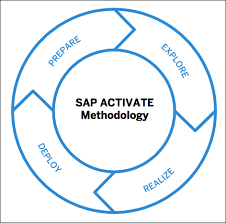SAP has come up with SAP Activate, a framework to enable SAP project managers across the globe to deliver projects with ease and clarity. A common misconception among the SAP fraternity is that SAP Activate is a project management methodology. It is much more than that!
What is Methodology?
A methodology is like a roadmap that answers:
- What needs to be done?
- How should it be done?
- When should it be done?
- Who is responsible for doing it?
SAP Activate is a structured, agile methodology designed to simplify the implementation of SAP SuccessFactors. It ensures a smooth transition from project planning to go-live while optimizing HR processes. The methodology includes six phases:
The methodology includes six phases:

1. Discover: Define goals, assess business needs, and explore pre-built solutions.
Objective: Understand business needs and project goals.
Activities:
• Initial consultations
• Defining project scope
• Identifying key stakeholders
2. Prepare: Build the project team, plan activities, and set up the system environment.
Objective: Plan and prepare for the implementation.
Activities:
- Project planning and scheduling
- Resource allocation
- Setting up project governance
3. Explore: Conduct workshops to align business needs with standard SuccessFactors features.
Objective: Design the solution based on requirements.
Activities:
• Conducting workshops
• Mapping business processes
• Configuring system settings
4. Realize: Configure the system, test functionalities, and train users iteratively.
Objective: Build and test the solution.
Activities:
• System configuration
• Data migration
• User acceptance testing (UAT)
5. Deploy: Finalize testing, migrate data, and launch the solution.
Objective: Launch the solution to the production environment.
Activities:
• Final data migration
• Go-live planning
• Training end-users
6. Run: Provide ongoing support, monitor system performance, and apply updates.
Objective: Support and optimize the solution post-deployment.
Activities:
• Ongoing support and maintenance
• Performance monitoring
• Continuous improvement initiatives









